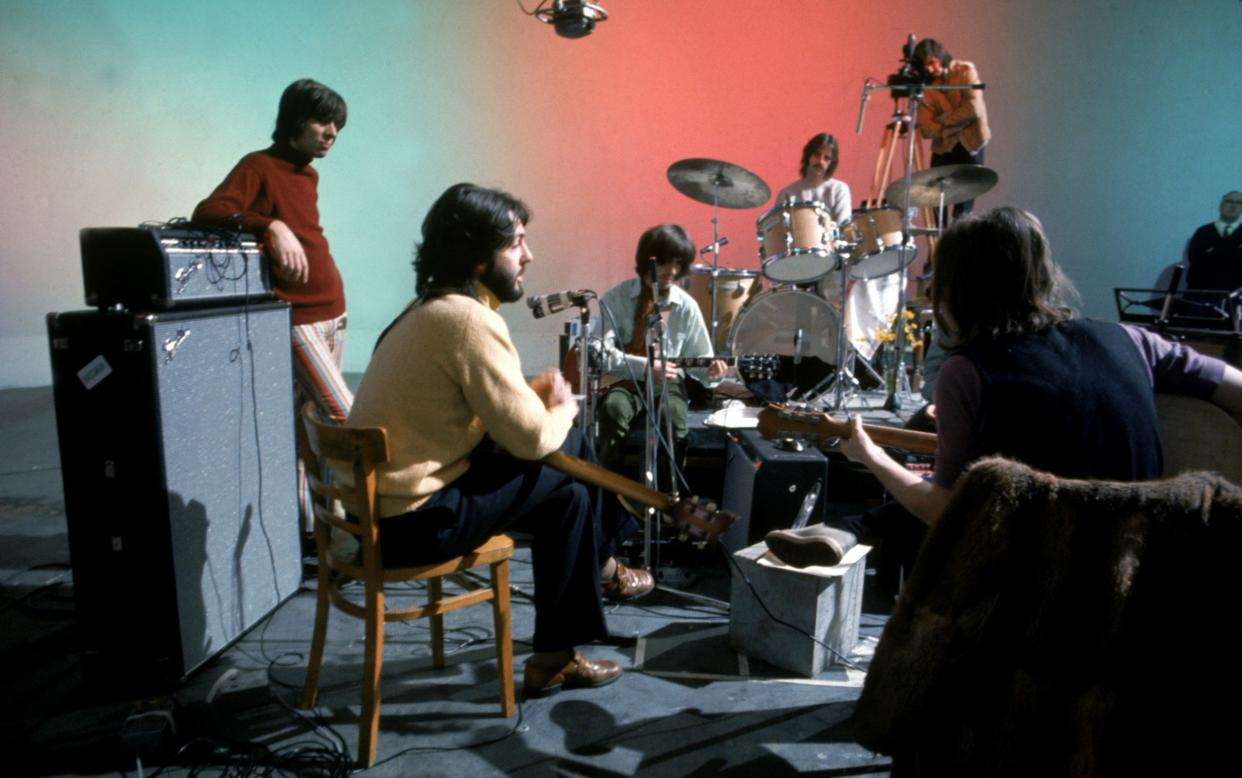Let It Be, review: This charming film offers a fresh perspective on the last days of the Beatles

So, it turns out to no one’s great surprise, they just could not let it be. In the wake of the 2021 release of Peter Jackson’s mammoth three-part Disney documentary The Beatles: Get Back, about the making of the band’s final album Let It Be, here comes the re-release of Michael Lindsay-Hogg’s original 1970 film – out of circulation since the early 1980s – for which all that footage was shot.
There is nothing new on offer here. Effectively it is another cut of the same recording sessions, utilising the same shots of the same performances, following the same narrative from shambolic rehearsals to the last roof-top concert, only much more heavily edited, lacking all the AI restoration technology that breathed life into offcuts, and running at a short, sharp 80 minutes compared to Jackson’s pleasingly indulgent 468 minutes. Even the most diehard Beatles fan could be forgiven for questioning: isn’t it just the same movie, only less so?
Well, yes and no. This diehard Beatles fan, for one, was utterly delighted by it. Great music, big personalities, clever shots and a fantastic final concert in a shiny new print blasting out through the full power of a cinema sound system: what’s not to love?
When Let It Be was first released five decades ago, the Beatles had just announced that they had broken up, which cast a depressing shadow over a fly-on-the-wall documentary that does not always show them in the most flatteringly glamorous or musically professional light. Into the messy jams, spotty unshaven faces and coldly lit settings, bereft fans read the runes of their heroes’ demise, and Let It Be was treated less as a glorious swansong than a gritty social realist drama of divorce. Following a brief theatrical outing in May 1970 and low-quality video release in 1981, the documentary vanished from view. The Beatles quietly disassociated themselves from it, nixing any discussion of its revival, presumably because it evoked painful memories of a difficult time.
Jackson’s Get Back was widely celebrated for restoring joy to the last days of the Beatles, lingering lovingly on smiling interactions. But I wonder if what had really changed was us, our appreciation of the complexities of that moment in Beatles history, our nostalgia for it, and our familiarity with songs that have become part of the soundtrack for our lives? Because the smiles, the joking, the love and communication are all there in the original. There is one minor disagreement between Paul McCartney and George Harrison (“I’ll play whatever you want me to play,” proposes Harrison, passive aggressively. “Or I won’t play at all if you don’t want me to.”) but the film cuts swiftly on, jettisoning scenes (restored by Jackson) of a tearful McCartney speculating on the end of the Beatles to jump forward to the Apple basement studio where the sloppy jams are starting to bear fruit.
Time has been kind to Lindsay-Hogg’s film. I felt like I was viewing the period through a fresh perspective, perhaps simply because his editing style and choices (made contemporaneously, without benefit of hindsight or a deeply nostalgic agenda) felt quite radically different to Jackson’s.
There is less indulgence because Lindsay-Hogg always has to cut to the chase and move swiftly on, so different moments jump out: George Martin happily playing tambourine and percussion during jams; Paul McCartney quietly composing an elegiac instrumental whilst Ringo Starr looks lovingly on; John Lennon and McCartney giggling over harmonies on Two Of Us and George Harrison giving Ringo songwriting advice as he stumbles through Octopus’s Garden. All these scenes appeared in Jackson’s film, but the economy of Lindsay-Hogg’s cut lends them interesting emphasis.
Lindsay-Hogg’s film seems very modern, in part because of the bold choice (for the time) to have no voiceover narration. With nothing to explain and guide the narrative, the viewer is thrown into the action and left to draw their own conclusions from snatches of dialogue and fleeting expressions. Yoko Ono sits next to Lennon throughout, a strange presence much remarked on by the film’s first critics. Today’s viewer already knows the history, and instead of pondering implications can simply enjoy seeing it being brought to life again. And the biggest surprise of Let It Be is that it is full of life.
The final half features astonishing performances of now classic songs played by men who are quite evidently enjoying the experience. And sure, we have seen it all before, but I won’t be the only one more than happy to see it all again. Indeed, over the final credits, we hear a stray bit of dialogue from Lennon, saying “Let’s do it again.” Yes, let’s.
Let It Be will be available on Disney+ from May 8


